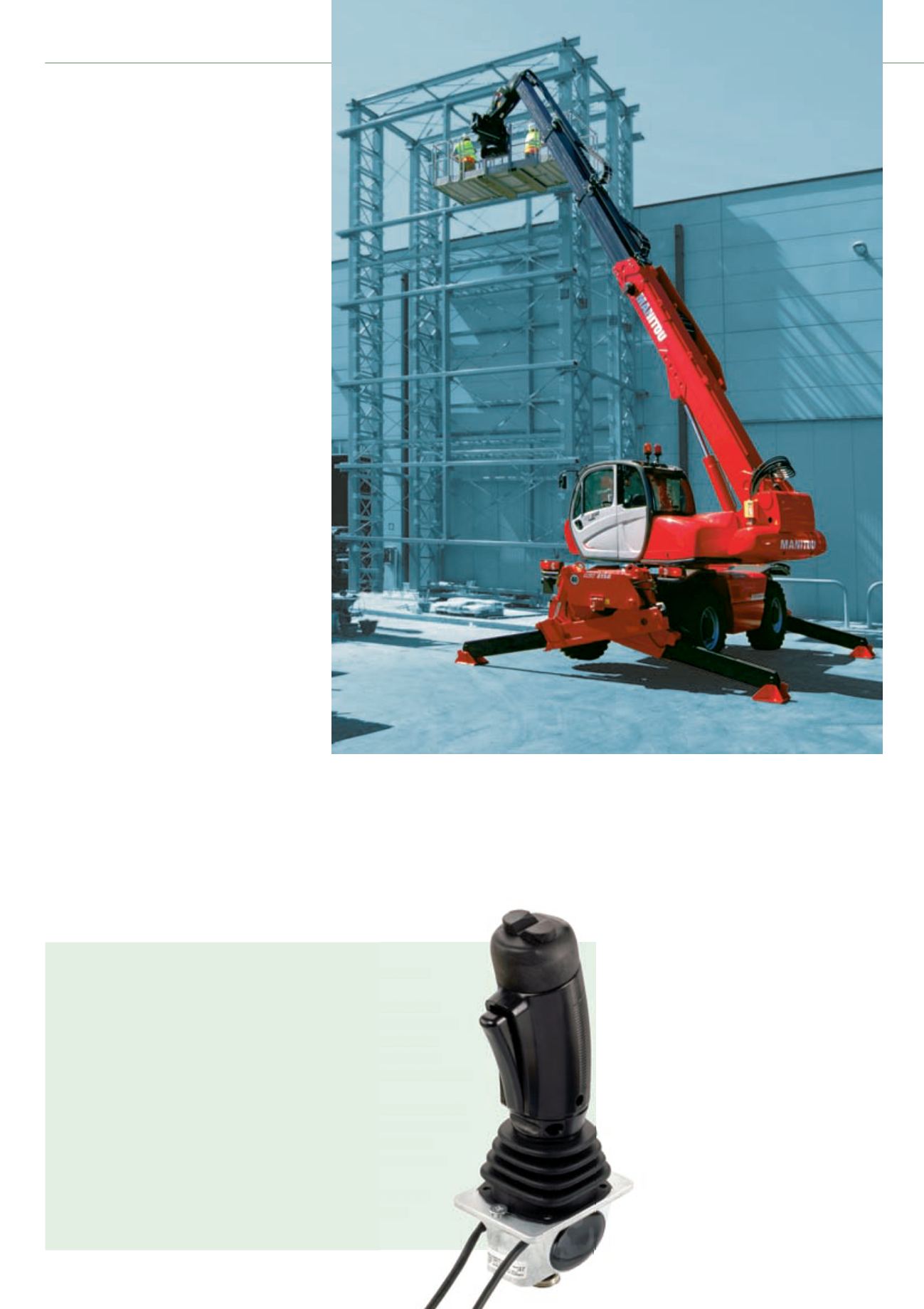
36
access
INTERNATIONAL
MAY-JUNE 2013
CONTROLLERS
VIEW FROM PENNY & GILES
Penny & Giles’ hand and foot controllers use technology based on Hall-effect
system-on-chip sensors that are activated by magnets.
Mike Iles, marketing manager of Curtiss-Wright Controls Industrial, Penny &
Giles Controls’ parent company, comments, “It is anticipated that we will continue
to develop position sensing products using Hall-effect technology and custom-
engineer for OEMs, for example, steering controls. Also we have developments
looking at higher powered programmable motor controllers that would be suitable for
larger vehicles and higher lift envelopes.
Penny & Giles’ equipment is generally designed to accommodate reverse polarity
connection and electrical overload without damaging the electronics. “More recently
we have seen many OEMs start to discuss the EN 13849-1, (replacing the EN
954-1), machinery safety requirements, which means hardware and software is
developed from the outset to meet more stringent failure criteria.”
In the future, Mr Iles says there will be the need for more rugged operator
controls with longer life sensing elements to provide lower maintenance
costs for the vehicle fleet operators who supply the rental market.
reducing risks of accidents, insurance costs
and the probability of litigation. For example,
our latest control product, the Autec Dynamic
series implements the stop function with PL e.
The EN 280 standard also requires that all
movements of the AWP can only take place
while the controls are being actuated.The
controls, when released, shall automatically
return to the neutral position and halt the
movements. Autec implemented these
requirements with a dedicated safety function
named UMFS (unintended movements
from standstill).The UMFS function fulfills
requirements of PL d.
MR HEMMING:
Generally, operator safety has
always been the most important issue. We
are putting maximum commitment into the
development of products that meet the highest
safety requirements. For this reason, we offer
additional functions on our controls through
customisation.This is so that controls meet
the specific requirements of a certain market
or even a certain machine. For example, HBC
controls can be equipped with deadman
switches, enabling switches, inclination switch
or the radiomatic shock- off, roll-detect and
zero-g. All these features protect the operator
from unintended machine movements in
emergency situations.
AI:
How is the interactivity
between controls and
powered access equipment
developing?
MR SILVESTRI:
In recent years, the use of
field buses like CAN and the like have
significantly simplified the wiring of the
machines in mobile applications and, thus, of
remote controls. Some years ago, the receiver
would be connected to the machine using the
relevant amount of cables; now the only cables
carrying information are those connecting the
bus network.The safety functions still have
separate connections, thus maintaining their
ability to independently take the machine to a
safe state.
MR HEMMING:
In recent years, the use of
interfaces such as CANopen has become
more and more common with access platform.
As we are developing our products in close
cooperation with our OEM customers we
get to know such trends in a very early stage.
This enables us to adapt our products to the
latest developments in machine technology.
For example, CANopen technology has been
available with HBC radio controls for many
years.
AI:
What are the requirements
for platform manufacturers?
MR SILVESTRI:
To properly implement safety
functions in today’s machines, manufacturers
need to know the relevant parameters of all
involved parts and subsystems.
Regardless of the reference standard (ISO
13849-1 or IEC 62061) these parameters
include the MTTF (a measure of reliability),
the DC (the capability to self-diagnose
faults), the PFH (or probability of failure per
hour), and the category (indicating the fault
tolerance).
Only with knowledge of those parameters
can machine manufacturers adequately
assess the safety of their machine, avoiding
over- or under-engineering the required
safety functions. Moreover, the manufacturer
should trust these parameters given by the
suppliers of the safety systems, because
they often lack the knowledge for
assessing their capabilities. It is important
that these safety subsystems have also been
authorised by an independent like TÜV.
■
Autec control
equipment is used
in this roof-top
application


